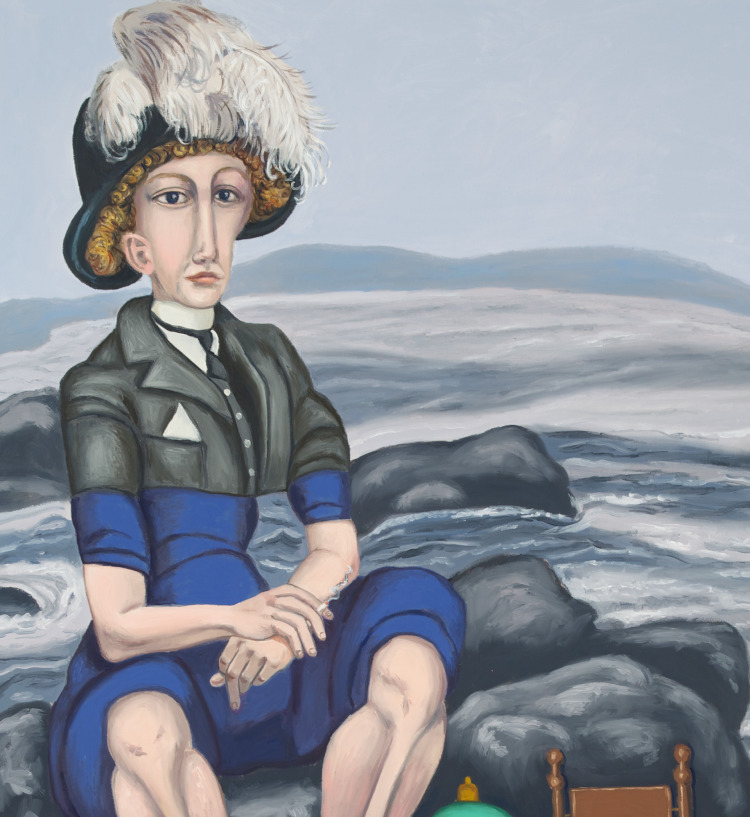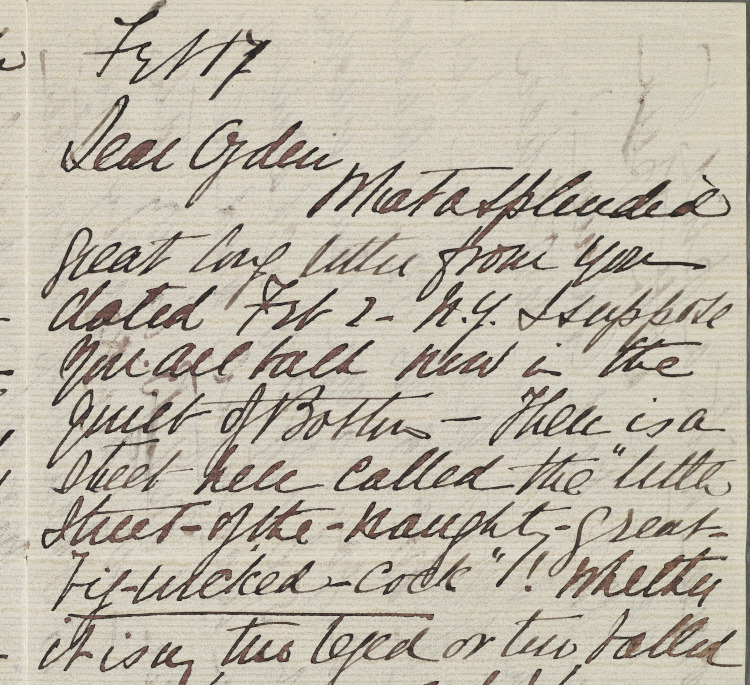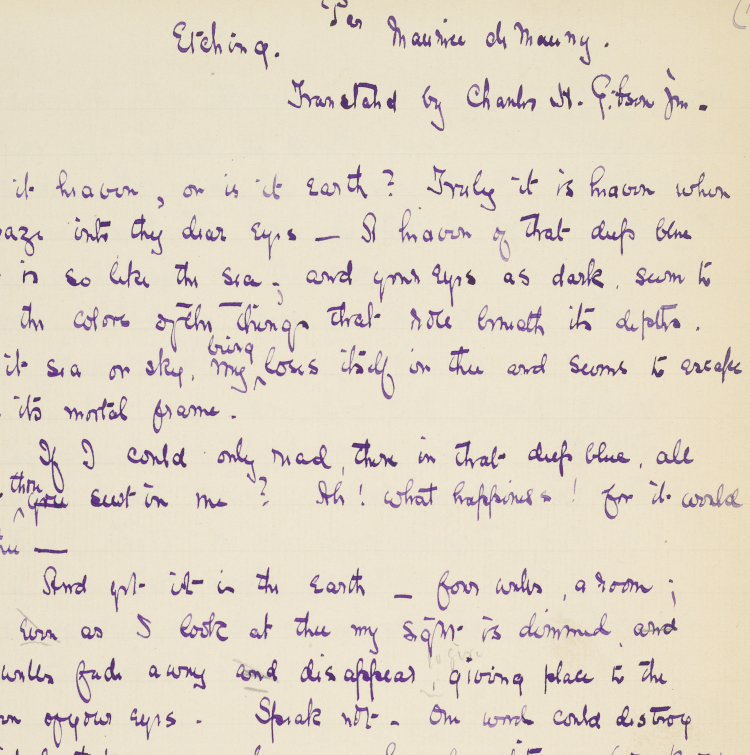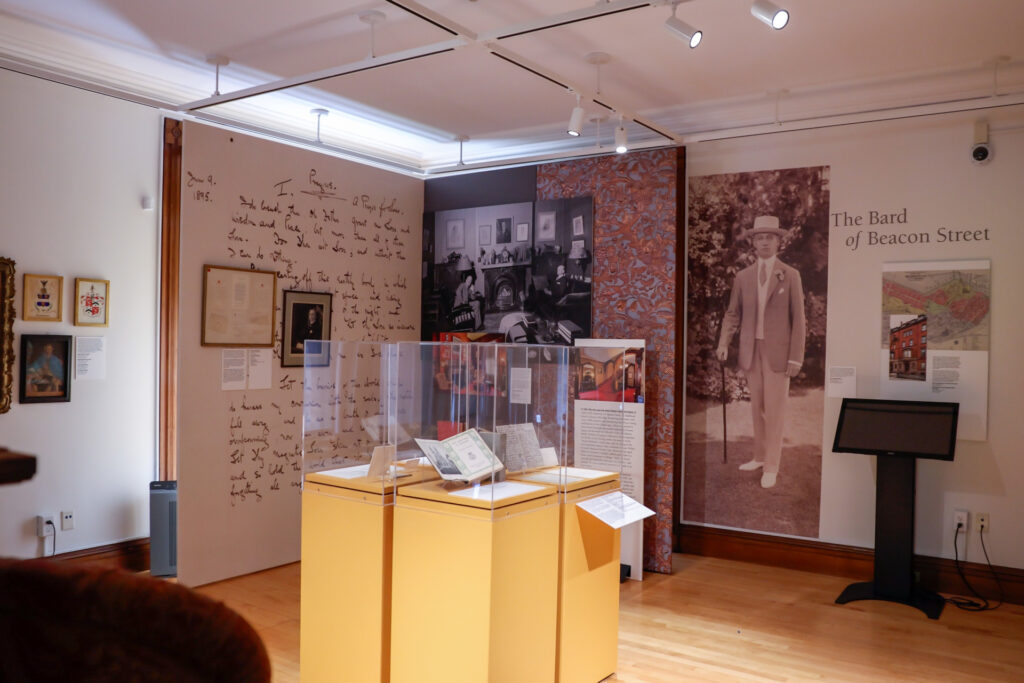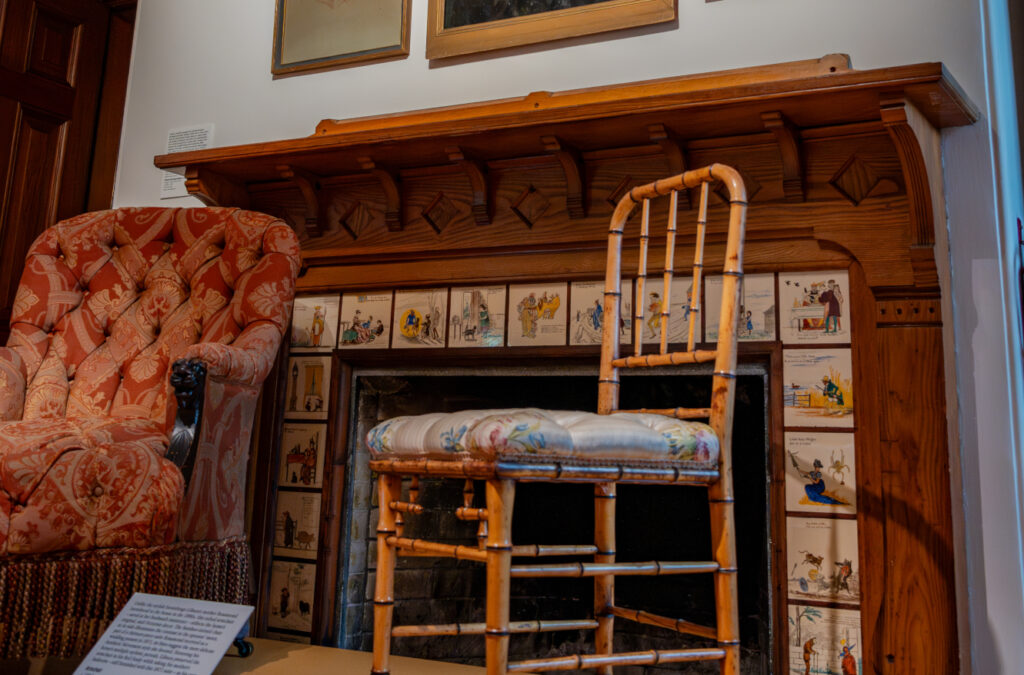 Eustis Estate
Eustis Estate

Gibson House
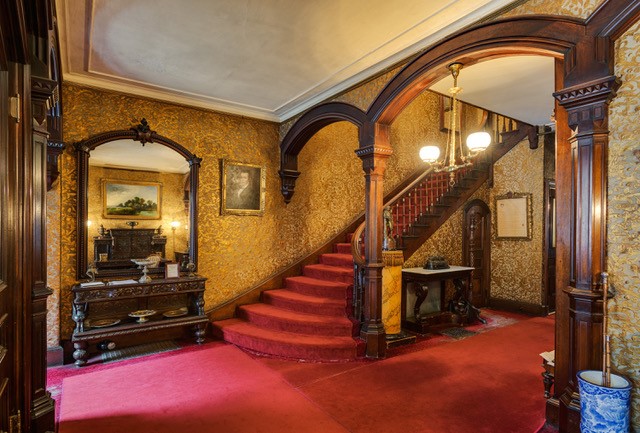
In 1934, fifty-nine-year-old writer Charles Hammond Gibson Jr. (1874-1954) inherited 137 Beacon Street, his childhood home in Boston’s Back Bay. Preserving the home’s still- intact 1890s interiors and presenting himself as a living embodiment of the Gilded Age, Gibson envisioned a future house museum that would enshrine his literary legacy and showcase the lifestyle of his elite Boston family. Privately, his project reflected a host of anxieties: the decline of his writing career, the passage of his “Boston Brahmin” social class, and the fading of his once-legendary beauty. Like a reversal of Oscar Wilde’s fictional character Dorian Gray, whose portrait aged while he remained youthful, Gibson grew older in a home utterly immune to change. Today the house provides an invaluable reflection of a lost era and perhaps the most authentic portrait ever made of its final owner.
When Gibson’s grandmother Catherine Hammond Gibson commissioned the family home in 1859, she avoided the two-room entryway of a typical Back Bay home in favor of a more impressive double-width stair hall. The striking wallpaper in this space, added by her daughter-in-law Rosamond in the 1890s, represented the very height of Aesthetic Movement fashion. Produced in Japan, its gilded, three-dimensional pattern imitates seventeenth-century stamped leather.
Tales from the House of Gibson
Hannah BarrettLord Charles and Lady Marbletop
Hannah Barrett (American, b. 1966), 2010 (Credit: Hannah Barrett and Childs Gallery, Boston)
In 2010, the Gibson House Museum invited artist Hannah Barrett to create an imaginary series of Gibson portraits. Her surreal Tales from the House of Gibson: Lord Charles and Lady Marbletop presents Gibson on the rocks below Forty Steps — his figure drawn from a c. 1905 photograph — with his feet planted in his Red Study. Reclaiming the writer as a Queer icon, Barrett juxtaposes his muscular legs with an extravagantly plumed woman’s hat; echoing this hybrid, Barrett’s double-barreled title conflates Gibson’s aristocratic pretension with the name of a female character from one of his novels. Surrounded by grooming appurtenances and occupying multiple worlds, the writer appears as a dazzling chimera.
Letter from Arthur Little to Ogden Codman Jr. Page One
February 17, 1892; Codman Family Papers, Historic New England
In this gossipy letter to Ogden Codman Jr., the architect’s friend Arthur Little not only suggests Codman’s interest in the eighteen-year-old Gibson, but he also names two of Gibson’s paramours: the young man’s cousin, Mason Hammond, and his Beacon Street neighbor, Samuel Hooper:
I am afraid Mason has ‘had’ ‘little Charle’ and therefore discourages you about him…. How funny he [Gibson] and S. H. Hooper must be together! Anywhere but mostly in a bed!
Letter from Arthur Little to Ogden Codman Jr.
February 7, 1892Transcription of a letter from Arthur Little to Ogden Codman Jr. dated February 7, 1892. The quotation used in exhibition label is in BOLD.
[PAGE 1]
Feb 17
Dear Ogden
What a splendid / great long letter from you / dated Feb. 2 – N.Y. I suppose / you are back now in the / quiet of Boston – There is a / street here called the “little / street-of-the-naughty-great- / big-wicked-cock”! Whether / it is a two eyed or two balled / one I know not! I know / one which causes its owner / a great deal of trouble and / considerable pleasure!
Bowdoin is not at all good / looking, that is handsome, / but is great fun –
He is so liberal minded
Manuscript, “Etching, from the French of Maurice de Mauny”, Page One
Charles Hammond Gibson Jr. (1874-1954); Boston, 1895; Ink and paper; Charles Hammond Gibson Jr Collection, Archives of Gibson House Museum.
In the winter of 1894-95, it was Gibson’s affair with Maurice de Mauny-Talvande, a traveling lecturer claiming to be a French Count, that scandalized his social set; as Codman declares in this letter to his mother, “all Boston has been talking about them in a horrid way.” At the height of the affair, Gibson wrote the essay “Etching.” Claiming to be the work’s translator rather than its author, Gibson “records” his lover’s breathless account of their “first kiss, sealed by a thunderbolt.”
Zoom into the manuscript and letters and read the transcripts below.
Manuscript, “Etching, from the French of Maurice de Mauny”
1895Transcription of Gibson’s “Etching.” The quotation used in exhibition label is in BOLD.
[PAGE 1]
Par
From the French Etching. Maurice du Mauny.
of Maurice du Mauny . Translated by Charles H. Gibson Jr.
by Charles H. Gibson, Jr.
Is it heaven, or is it earth? Truly it is heaven when / I gaze into thy dear eyes – A heaven of that deep blue / that is so like the sea; and your eyes, as dark, seem to / take the colors of the things that roll beneath its depths. / Be it sea or sky, my being loses itself in them and seems to escape / from its mortal frame.
If I could only read, there in that deep blue, all / that you thou seest in me? Ah! what happiness! for it would / be thee –
And yet it is the earth – four walls, a room; / but even as I look at thee my sight is dimmed and / the walls fade away and disappear, giving plea to the / heaven of your eyes. Speak not. One word could destroy / my ideal that even now has become a heavenly reality. You know / that I love you; and what if you did not love me? The / shortest silence now outweighs in eloquence the greatest speech / – speak not, – and let me live in the heaven of thine eyes / – Is it true? Is it possible? No it cannot be – and yet / a flash of lightning from thine eyes lights up the darkness: It / says – what does it say? – “I love you” –
Another flash of lightning – but not from you this time. / It comes from without. It tears the very elements and / from afar the thunder follows close upon it. It lightnings it
Letter from Ogden Codman Jr. to Sarah Bradlee Codman
March 5, 1895Transcription of a letter from Ogden Codman Jr. to Sarah Bradlee Codman dated March 5, 1895. Codman often dispensed with punctuation, as reflected here. Given how abruptly Codman changes topic, moreover, the exact order for any page beginning with a new sentence is not entirely clear. The quotation used in exhibition label is in BOLD.
[PAGE 1]
March 5, 1895.
[signed at top, alongside the lefthand margin: “Your affect. / Son Ogden.”]
5 WEST SIXTEENTH STREET
Dear Mère Cot
I enclose two cuttings / that may amuse you / in return for those you / sent me. I shall put / the view of Old Tremont / St in my scrap book / I am very glad to have / it. Think of F. J. trying / to smuggle clothing in such quantities!!
I wonder if that was / on [?] Col. Drury Lane [?] / I went to Boston Saturday / Mrs. Van Renselaer Cruger / was on the train going to
Charlie Gibson on the Record
Listen to recordings of Charles Gibson reading his poetry and excerpts of an interview with the Boston Herald.
